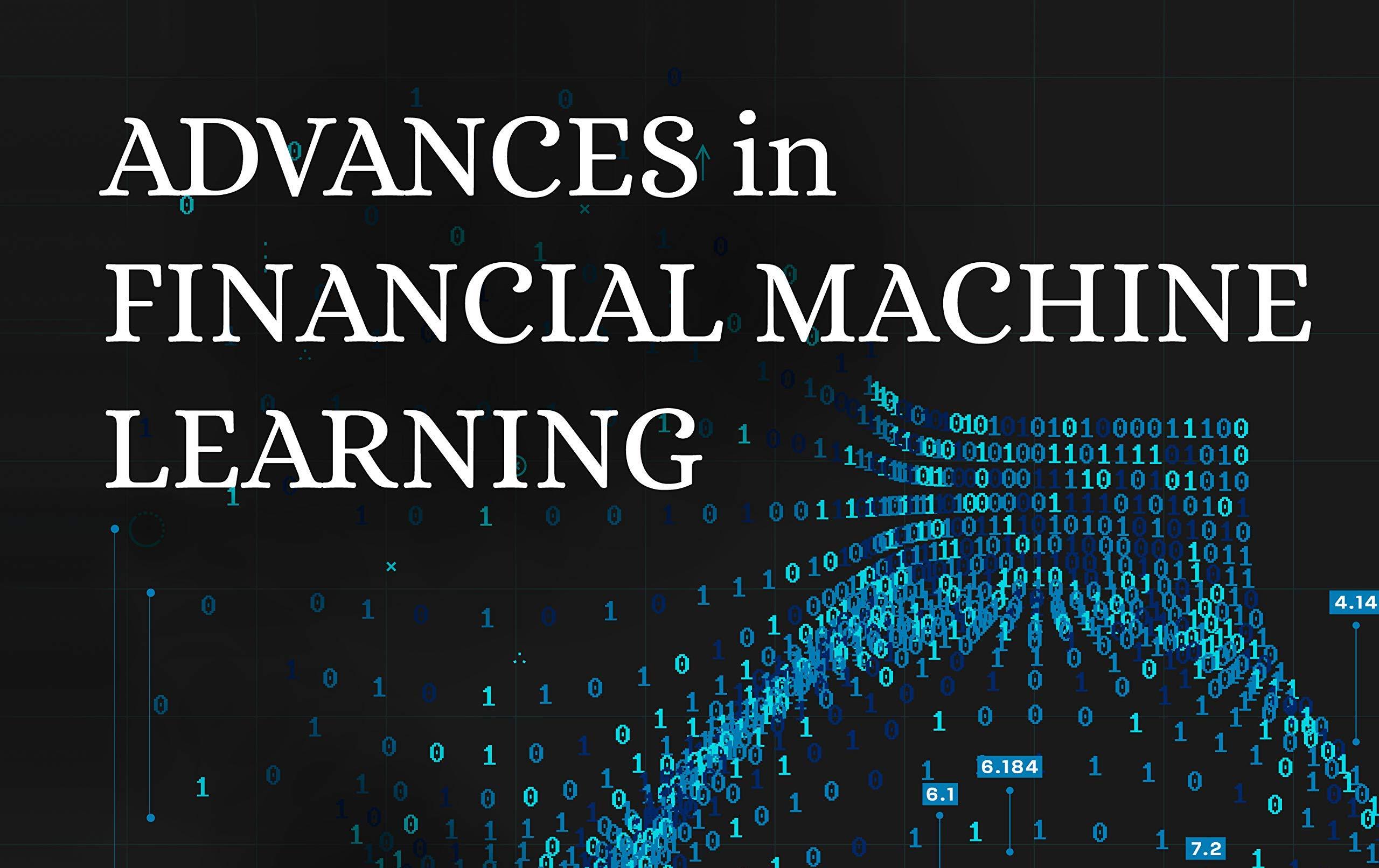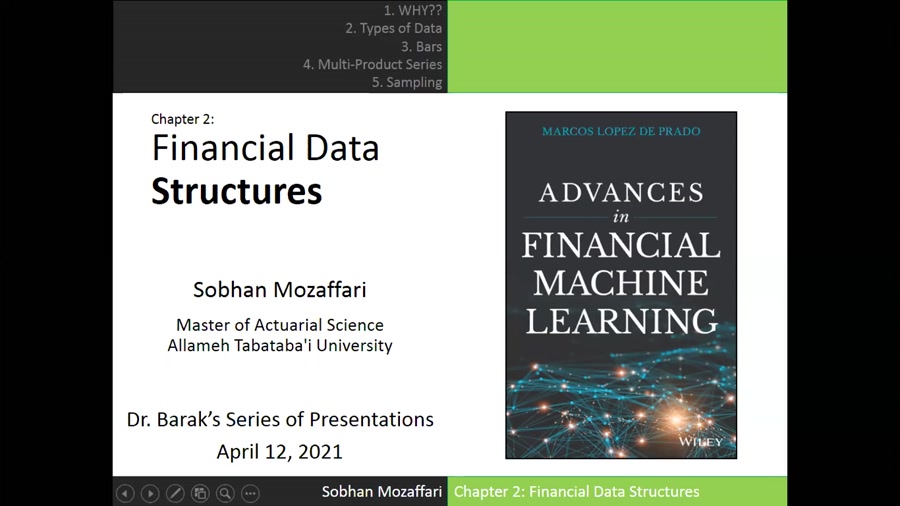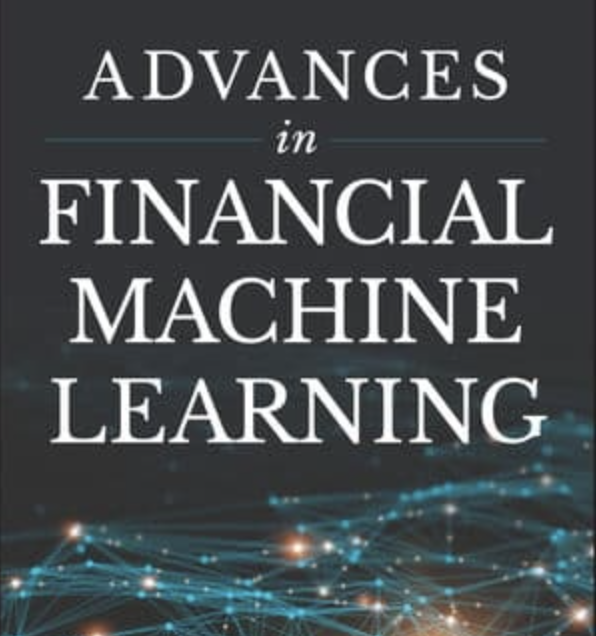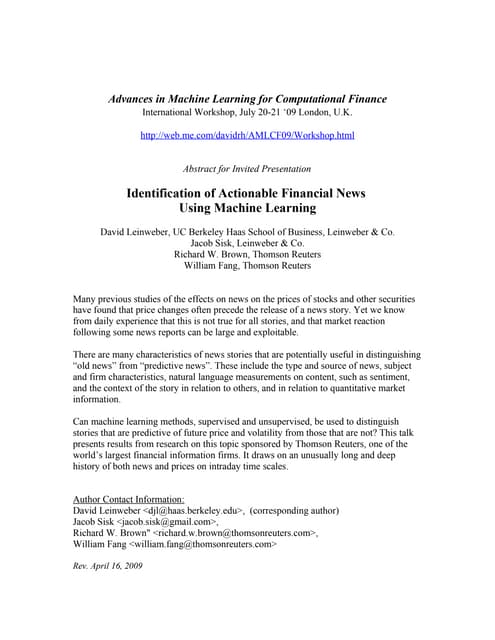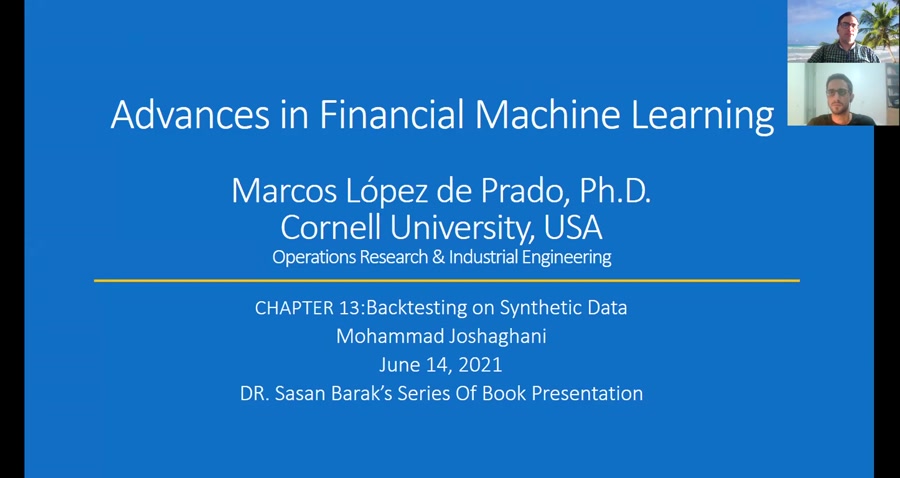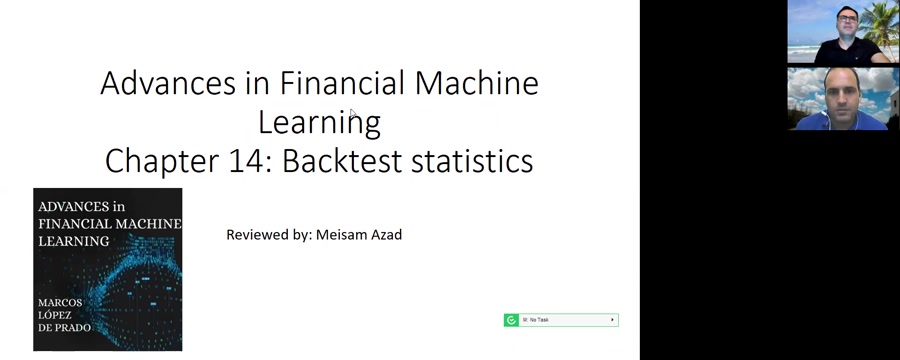Advances In Financial Machine Learning Pdf

The world of finance is undergoing a rapid transformation, driven by sophisticated algorithms and data analysis. Advancements in Financial Machine Learning (FinML) are no longer theoretical concepts confined to research papers; they are increasingly shaping investment strategies, risk management protocols, and even regulatory frameworks.
This evolution, while promising greater efficiency and potentially higher returns, also presents a complex landscape of challenges that professionals and regulators alike must navigate.
The Rise of FinML: What's Driving the Change?
The proliferation of data, coupled with the increasing power of computational resources, is a primary catalyst. This has enabled the development and deployment of sophisticated machine learning models capable of identifying patterns and making predictions that were previously impossible. FinML is now being applied across a wide spectrum of financial activities.
These activities range from algorithmic trading and portfolio optimization to credit scoring, fraud detection, and regulatory compliance. The pursuit of efficiency, increased returns, and reduced risk are strong motivators.
Several key techniques are at the forefront of this revolution. Deep learning, reinforcement learning, and natural language processing are among the most actively researched and implemented. These techniques provide the ability to analyze complex datasets and extract meaningful insights.
Key Applications and Their Impact
Algorithmic trading has become increasingly sophisticated, with machine learning models used to identify and exploit fleeting market opportunities. These models can adapt to changing market conditions and execute trades with speed and precision.
Portfolio optimization is also benefiting from FinML. Algorithms can analyze vast amounts of data to construct portfolios that are tailored to specific risk-return profiles. They aim to outperform traditional methods by dynamically adjusting asset allocations based on real-time market data.
Risk management is another area where FinML is making a significant impact. Machine learning models can identify potential risks that might be missed by traditional methods. This has implications for both financial institutions and regulators. These models improve fraud detection and assess credit risk.
Challenges and Considerations
Despite its potential, the adoption of FinML also presents significant challenges. Data quality is paramount. The effectiveness of machine learning models depends on the accuracy and completeness of the data they are trained on.
Model interpretability is another critical concern. Many advanced machine learning models, particularly deep learning networks, are essentially "black boxes," making it difficult to understand how they arrive at their predictions. This lack of transparency poses challenges for regulatory compliance and risk management.
Ethical considerations are also gaining prominence. The use of machine learning in finance raises questions about fairness, bias, and accountability. Algorithms can perpetuate existing biases in the data, leading to discriminatory outcomes.
The Regulatory Landscape
Regulators around the world are grappling with how to oversee the use of FinML in financial markets. The lack of transparency in some machine learning models is a major challenge. Regulators are seeking ways to ensure that these models are used responsibly and do not pose undue risks to the financial system.
The Securities and Exchange Commission (SEC) and other regulatory bodies are actively exploring how to adapt existing regulations to address the unique characteristics of FinML. They are also working to develop new frameworks that promote innovation while protecting investors and maintaining market integrity.
The challenge for regulators is striking a balance between fostering innovation and mitigating risks. Overly strict regulations could stifle the development of FinML, while lax oversight could lead to unintended consequences.
The Human Element Remains Crucial
Despite the increasing sophistication of FinML, the human element remains crucial. Machine learning models are tools that can augment, but not replace, human judgment. Experienced professionals are needed to interpret the output of these models, assess their limitations, and make informed decisions.
The collaboration between humans and machines is likely to be the most effective approach. This approach maximizes the benefits of both while minimizing the risks. FinML can empower professionals to make better decisions.
Ultimately, the success of FinML depends on the ability of individuals and organizations to embrace this technology responsibly and ethically. Education and training are essential to equip the workforce with the skills needed to navigate this new landscape.
Looking Ahead
The field of FinML is expected to continue to evolve rapidly in the coming years. New algorithms, data sources, and applications are constantly emerging. The integration of artificial intelligence into finance is not a fleeting trend.
The integration of AI will reshape the industry in profound ways. This means potentially greater efficiency, increased returns, and improved risk management. The successful adoption of FinML will require a collaborative effort.
Collaboration should be between academics, industry professionals, and regulators. By working together, stakeholders can ensure that FinML is used to create a more efficient, transparent, and resilient financial system.


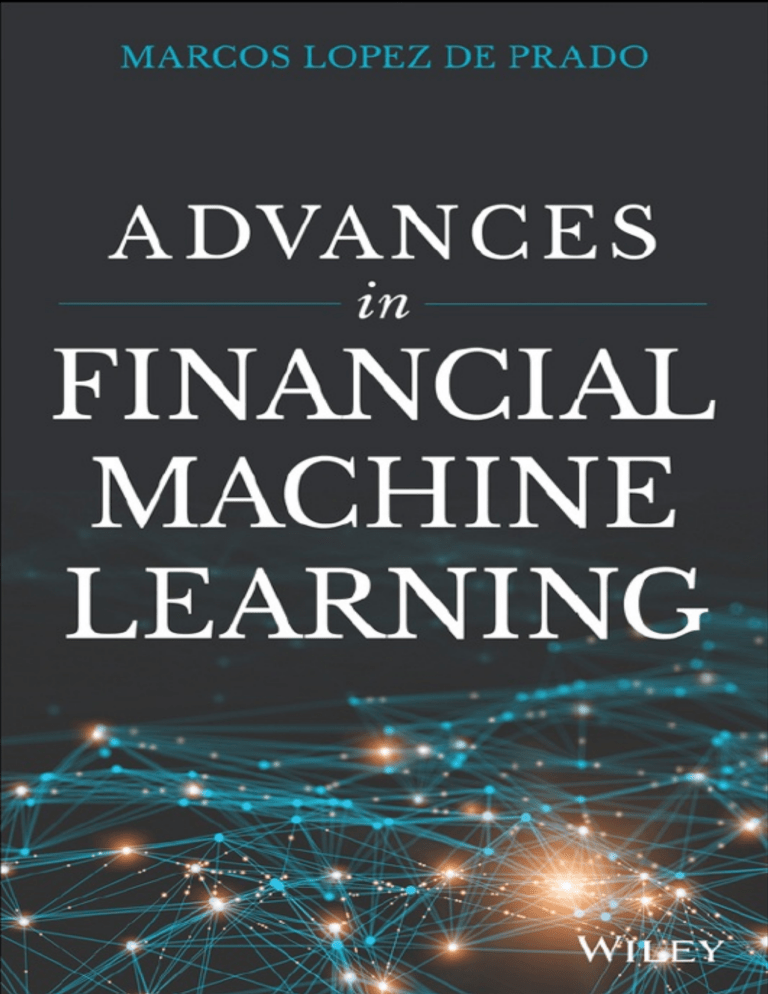
![Advances In Financial Machine Learning Pdf [PDF] Advances in Financial Machine Learning by Marcos Lopez de Prado](https://image.isu.pub/240806024339-31d4fc941c716a9a572b3d30df571ae8/jpg/page_1_social.jpg)
![Advances In Financial Machine Learning Pdf [Download] Advances in Financial Machine Learning - Marcos López de](https://image.isu.pub/230521162950-d10479354ab5bc4c6b97d567d4bcc615/jpg/page_1.jpg)

